Six Long-Lost Haitian Frog Species Found
National Geographic
Scientists searching for long-lost frogs in Haiti’s forests came face to face with the critically endangered La Hotte glanded frog, which sees the world through unusual, sapphire-colored eyes.
The frog is among half a dozen newly rediscovered Haitian species, which had not been seen for nearly two decades and occur nowhere else in the world, found by researchers from Conservation International (CI) and the International Union for Conservation of Nature’s (IUCN) Amphibian Specialist Group.
“All we hear from Haiti is bad news and we wanted to highlight something unique that Haiti has and really should be proud of,”
said Conservation International’s Robin Moore, an amphibian conservation specialist and co-leader of the expedition.
“It really is a symbol of what there is left to fight for and protect in Haiti.”
Perched on a high-elevation cloud forest leaf, the arboreal Hispaniolan crowned frog had not been seen since 1991, until this picture was taken in October 2010. These frogs sport crown-like protuberances and are found among bromeliads or orchids, which likely play some role in reproduction.
Haiti’s frog-friendly forests have been wiped out so thoroughly that only two percent of the nation’s original forest cover remains. But that remnant includes ecologically healthy oases concentrated in the mountainous tropical forests of the Massif de la Hotte and the Massif de la Selle, where Moore and colleagues conducted their hunt for the long-lost La Selle grass frog and other species.
Scientists were shocked to encounter the Macaya burrowing frog, not only because it had not been seen since 1996 but because it had never been seen in the locale where it was found or anywhere else outside of two distinct localities on the Massif de la Hotte. This frog spends considerable time in underground chambers, from which males can be heard calling and in which females are known to lay their eggs.
The grape-sized Macaya breast-spot frog is one of the smallest frogs in the world. It also inhabits a tiny range: the high-elevation (5,575-7,677 feet, or 1700-2340 meters) peaks of Formon and Macaya on southwest Haiti’s Massif de la Hotte. These forest areas are unfamiliar to many Haitians, Moore said.
“Even in Haiti people often say there’s nothing left to protect because the forest that is there is remote and very few people have been there. So we wanted to bring the forest to the people and say, ‘This is what you have, and it’s important for humans, not just for these [frog] species.’ ”
The Hispaniolan ventriloqual frog doesn’t use a dummy but is able to project its unusual, chirping call much like the human tricksters from which it takes its name.
Moore acknowledged that with Haiti still reeling from last year’s earthquake and facing serious human problems, frog conservation isn’t at the top of many people’s minds. But the species serve as health indicators for ecosystems, he stressed, which are also critically important for Haiti’s people. If the remaining forests vanish, more will be lost than the frogs that live there.
“For example these forests are protecting watersheds and the water that originates there is supplying urban centers like Port-au-Prince where rivers are running brown because of erosion. What happens there directly impacts the people downstream.”
The Mozart’s frog’s whistle-like call resembles musical notes when mapped as an audiospectrogram, a fact that inspired discoverer Blair Hedges to name the species after the famed composer. The newly rediscovered frog is a survivor, but like other species its future remains in doubt.
“We found islands of suitable habitat containing these species,”
said CI’s Robin Moore.
“But we also found an enormous number of critically endangered species. Ninety-two percent of Haiti’s amphibians are threatened with extinction, which is staggering, and they are literally clinging to the last remnants of forest.”
A single tree is all that remains of a once-forested slope in the buffer zone of the Macaya Biosphere Reserve on the Massif de la Hotte in Haiti.
Haiti’s few remaining forests are under growing threat as Haitians fell the trees that remain to make charcoal, a primary fuel source, or plant crops such as beans that quickly render soil infertile and necessitate a new and unsustainable cycle of clearing and planting.
The La Selle grass frog was the original target of Moore’s expedition but the species, last seen in 1985, eluded scientists and remains lost—if it survives at all.
But Moore said it appears that if Haitians can protect the pockets of forest that remain, many of the species that live there have more than a fighting chance of survival because they were found in such relatively good numbers.
“It really shows that even in a small patch of suitable habitat you can have an abundance of frogs despite what’s going on around it,” he said.
“That was very encouraging to me. It was pretty exhilarating and it really exceeded any of my expectations of what we would find.”
For background, see the following video.

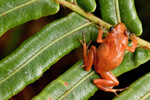



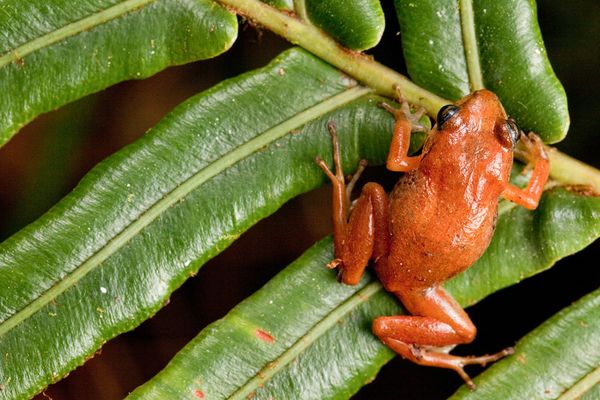
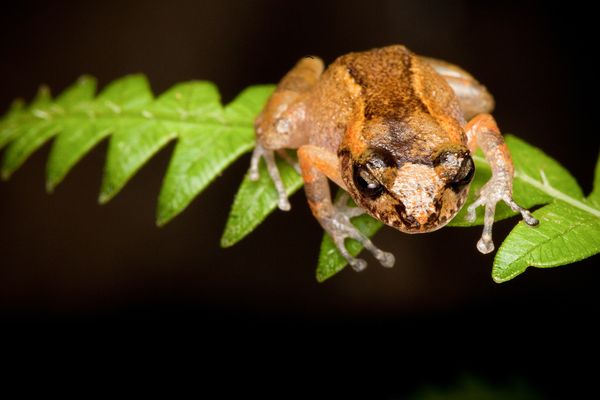
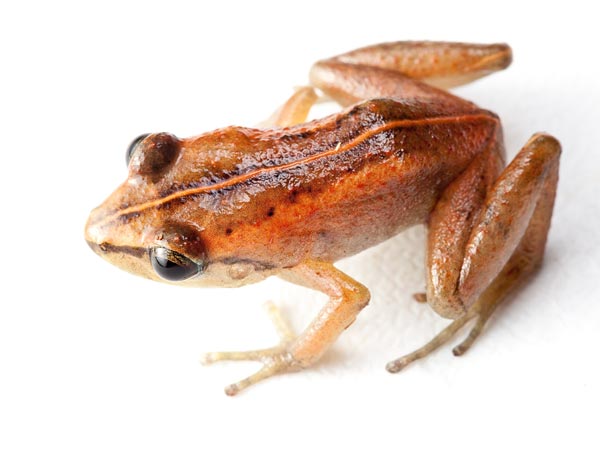
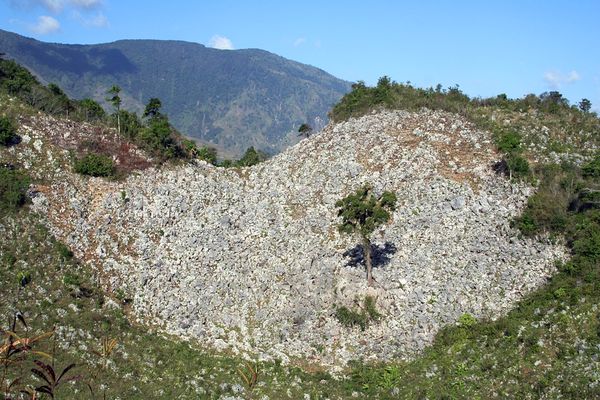


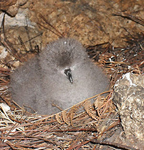
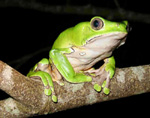
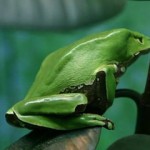
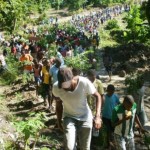
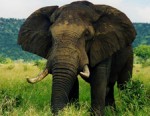
Comments
Six Long-Lost Haitian Frog Species Found — No Comments